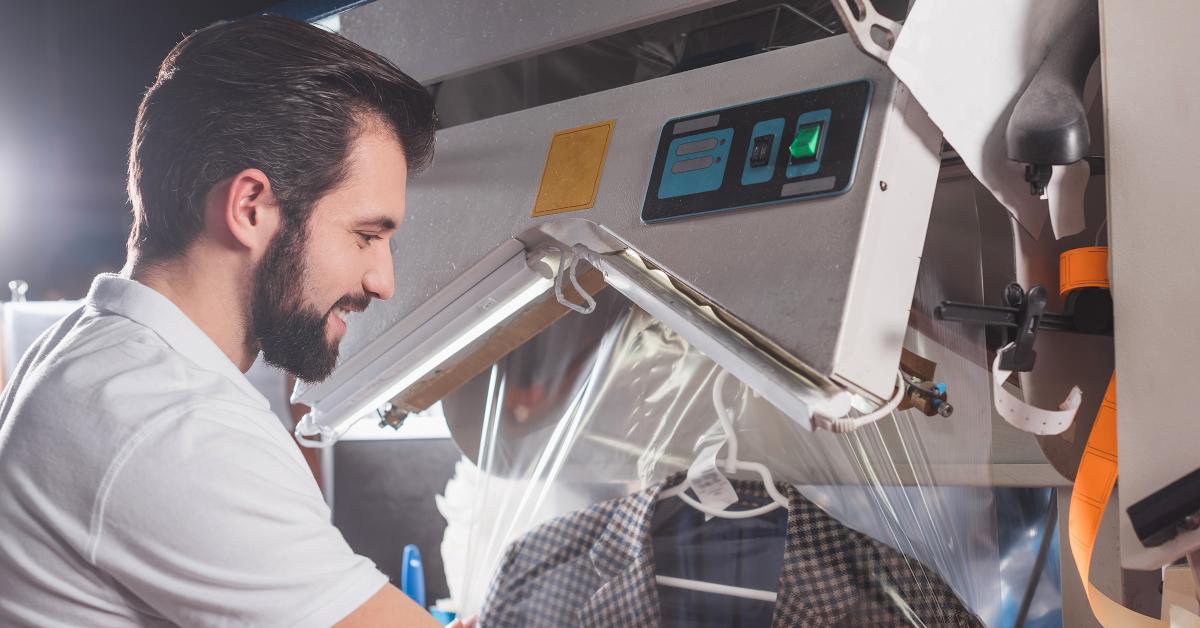CHICAGO — Upgrading or adding new equipment to a dry cleaning plant can give owners options they otherwise wouldn’t have had when pursuing new customers. Deciding what to get, however, can sometimes be a tough decision. In Part 1 and Part 2 of this series, we examined some of the advantages of new equipment and options cleaners have in financing these purchases. In the conclusion of this series, we’ll delve into other factors that cleaners should consider when upgrading their plant.
Making the Final Decision
There’s a lot of thought that goes into — or at least should go into — making a major purchasing decision. Besides the initial benefits of having new equipment, Matt A. Lipman, sales representative for equipment manufacturer Union Drycleaning Products, believes that there’s another element that dry cleaners shouldn’t ignore.
“Cleaners should consider not just the price of whatever they’re buying, but the support they’ll receive after the sale, and the longevity of the company,” Lipman says. Not only is having a piece of equipment that is no longer supported a huge headache, but it can be detrimental to the business’ long-term value.
“The equipment can become worthless and lower the value of the business,” he says. “When you go to sell the store, it’s devalued because you can’t buy spare parts for the equipment. When you’re buying equipment, it’s a long-term relationship.”
One option that dry cleaners had — and will have again once the pandemic fades — are site visits to other plants using the equipment under consideration.
“I think it’s great, because you can visualize a different approach to doing what you’re doing,” Lipman says. “I encouraged that, and I offer to take customers to go look at what they’re going to buy in advance.”
Surprisingly, Lipman says, not many cleaners actually take advantage of the option. He estimates that only 10-15% make a site visit before buying.
“The percentage of people that do that is small,” he says, noting that, when trade shows demonstrations are figured into the equation, the number goes up to about 25%. “For the ones who do go, it’s a great education, because anything can look good on a piece of paper in a brochure; when you see it in person, you can see the results, and you could talk to the operators.”
Lipman has found that, as machines get more advanced, another obstacle from the past is greatly reduced — the learning curve: “After the first day, the operators are up to speed with the machine. By the next day, they’re excelling. It also helps if they are repeat customers because every machine we build, builds on to the next machines, so you’re not starting from scratch.”
The Future is Out There
Dry cleaners planning to expand or retrofit their plants in this economic climate are, by definition, optimists. Making plans for a more hopeful future is their way of staking their claim on what’s to come.
That future, Lipman hopes, is coming soon: “My vision is that we’ve lost some storefronts and some older plants. The ones that survive, in the long run, will be more profitable because, hopefully, they are better-run now, and they’ll be able to grow faster. They’re more efficient, and that will allow room for growth.”
George Bednar, director of sales for NewLane Finance Co., agrees that the end of troubles that started a year ago is in sight.
“My hope is that, around Q3 and Q4 of this year, we’re going to see more of a return to normalcy,” he says, “with the promises that the country will be mostly vaccinated by July. I do think we’re going to start to see the turnaround, as more and more employers get back to work and out of the work-from-home phase. I think we’re going to see a bigger demand for more cleaners and more operators to upgrade their equipment. I won’t use the term ‘bountiful,’ but we do see the turn coming.”
For Part 1 of this series, click HERE. For Part 2, click HERE.
Have a question or comment? E-mail our editor Dave Davis at [email protected].

